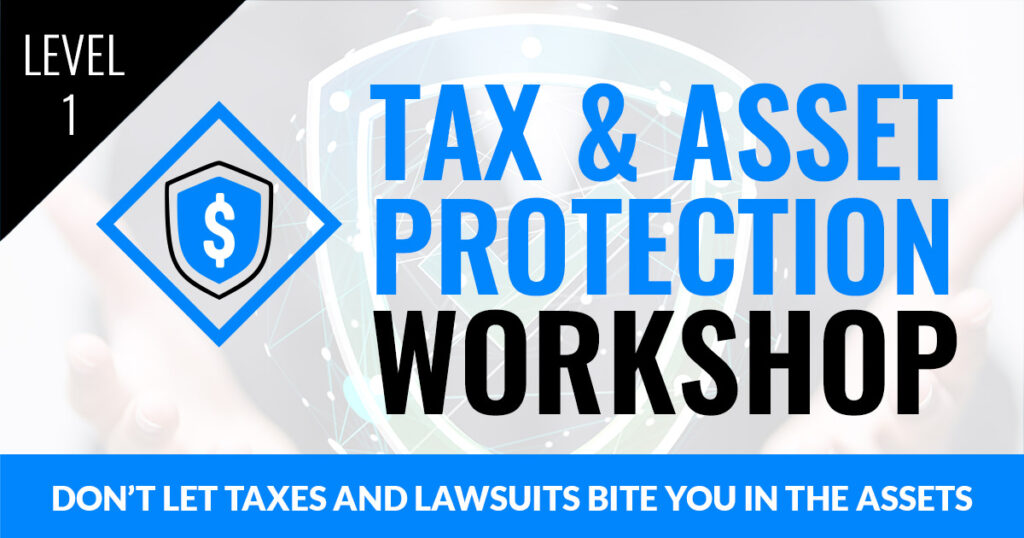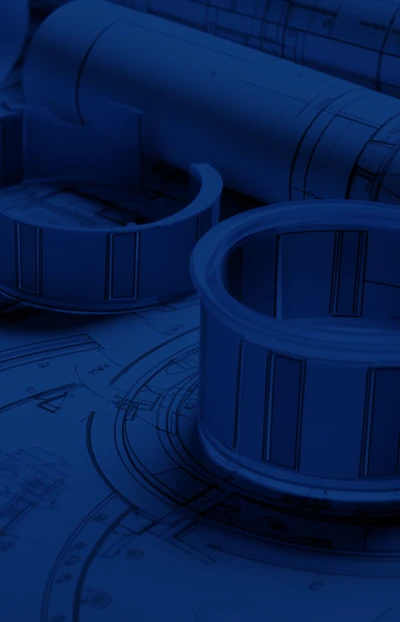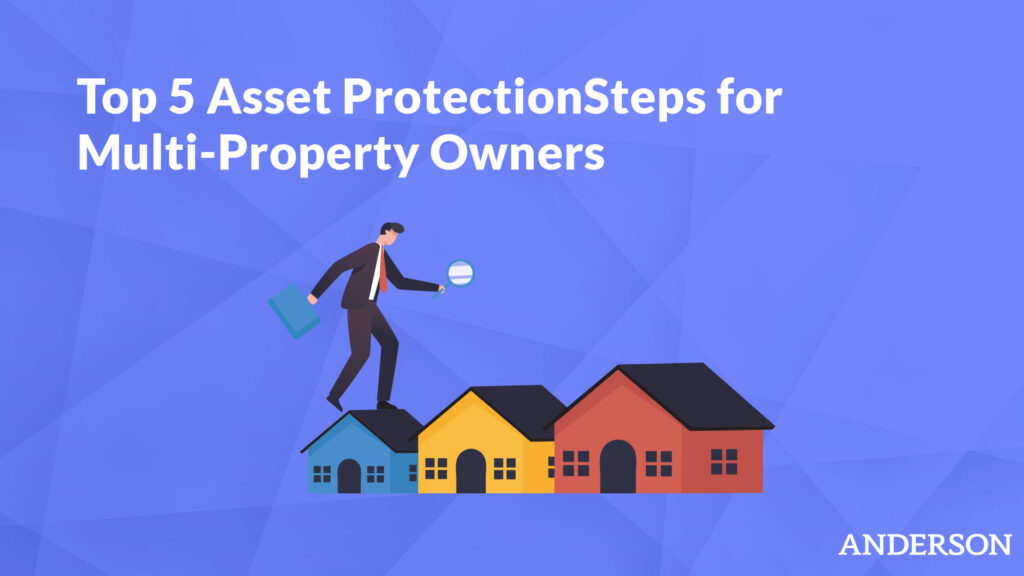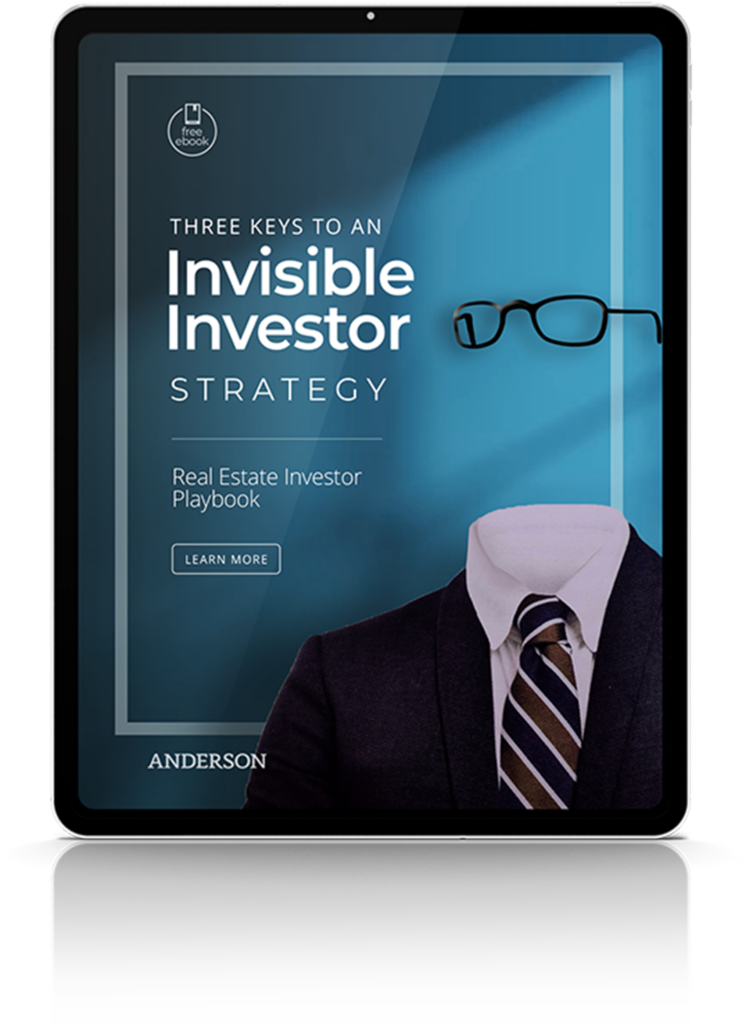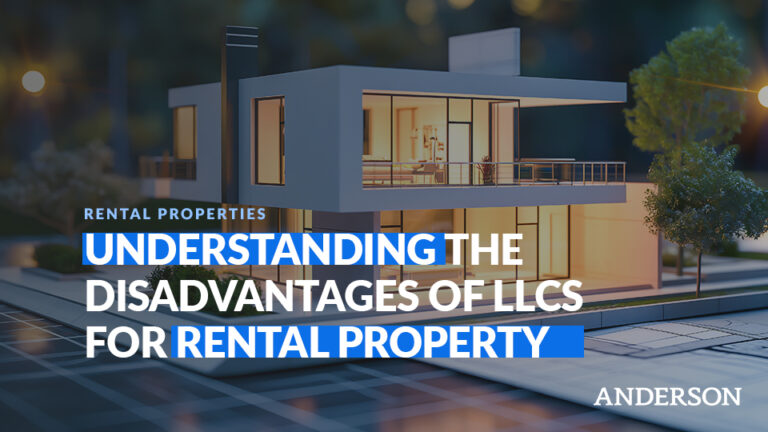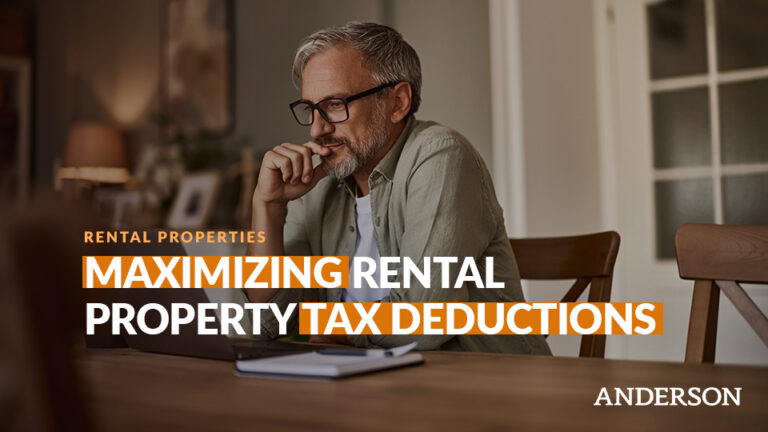

Did you know that you can generate great rental income from unusual short-term rentals like tiny homes, yurts, teepees, and Airstreams?
In this episode, Clint Coons, Esq. welcomes Rob Abasolo, creator of the Robuilt YouTube channel, and professional short-term rental coach at Host Camp Coaching. Clint and Rob discuss the process of identifying great locations, building or placing rentals such as teepees and yurts, tiny homes and airstreams on your property (or rented property) near popular cities and tourist attractions to build wealth.
Highlights/Topics:
- How Rob left Kansas for LA
- Renting on Airbnb to cover the mortgage
- Building tiny houses and the challenges involved
- Getting started – rules and regs, financing
- Calculating your Airbnb potential revenue
- Get into the rental business with a house hack
- Tiny homes, small homes, regular homes
- Get coaching from Rob at HostCamp
- Yurts, glamping, teepees, and airstream rentals
- Checking your municipalities for rules and regs on unusual rentals
Resources:
Full Episode Transcript:
This is the Anderson Business Advisors Podcast. The show for real estate investors, stock traders and business owners. We help you keep more of what you earn and protect what you’ve built. Let’s get started.
Clint: What’s up, guys? In this video, I’m going to be interviewing Rob Abasolo from Robuilt. He’s got some great strategies for you when it comes to making money through real estate in niche markets.
How many of you ever thought about taking a year putting on a piece of property and making $24,000 a year? He’s going to show you how to do that strategy and several more niches that definitely going to put money back into your pocket. You got to watch this.
Buckle up and stay tuned because we’re going to start this right now. Rob, how are you doing?
Rob: How are you doing, man? Let me just say, not only did you stick the landing on my name, Rob Abasolo, but you also stuck the landing on Robuilt because most people actually say, Rowbuilt, which is incorrect. Best friends, my mom, and everybody calls it Rowbuilt. You did your research, man. I’m happy to see it.
Clint: Just maybe I’m great with spellings, so I screwed it up that way.
Rob: That’s true.
Clint: You’ve got so much we’re going to break into. We got a short amount of time. I know you’ve got a hard stop today. We could just jump in really quick. If you tell everyone that’s watching right now how you got started in tiny homes, in glamping, and all of that, just your backstory to investing, and then we’ll get into the specifics of what it is that you do.
Rob: Sure, man. I was, like most of us at one point in our life, very broke. I was living in Kansas City with my wife. We were living in a 1100 square foot place. We weren’t making a ton of money, but we just knew that we wanted to move. We’re like, hey, what if we moved to a city that’s way more expensive and where our salaries certainly won’t cover the cost of living? My wife was like, sure, so we moved to LA.
We moved to LA, and we’re renting our apartment for 1600 sq. ft, it’s $1800 a month, $1850 or something like that. It’s a big change from that Kansas City house. That was 1100 sq. ft, $1000 a month. After about six months of living there, I just got fed up with paying a landlord. I told my wife, I’d rather be broke and own a home than paying the landlord and losing money every month. She was like, are you sure we can afford a house in LA? I was like, no, but we’ll figure it out.
We bought this two-two home with a little 279 square foot apartment. There’s a little studio apartment underneath. I had heard about this weird thing where people would pay you to stay at your place every night. It was called Airbnb at the time. I think it’s still around today. I had calculated that if I had rented the studio for $75-$100 a night, I can make $2000- $3000 a month.
That’s exactly what ended up happening. I was making $2000- $3000 a month. Meanwhile, that apartment that we were living in, I didn’t want to break the lease. I was going to have to pay like $2000 or something like that, which is a lot of money for us at the time. I was like, I’m just going to throw it on Airbnb until the lease runs out. It turns out that that apartment was actually making $1000-$2000 profit every month.
Wheels are turning for me because I was making one to $2000 there. My little apartment downstairs was making $2000-$3000 a month. My mortgage on this house was $4400. Very quickly, I was getting to the point where I wasn’t paying a mortgage. I was like, man, what if I could do this 10 more times?
I had this crazy idea. My lot was big in LA. It was 6600 sq. ft. I was like, what if we built a tiny house in the backyard? My wife was like, are you sure you know how to do that? I was like, no, I definitely am not sure, but we’ll figure it out.
I was like, it’ll cost like $25,000. We’ll be done in two weeks, and we’ll be good to go. Fast forward to 13 months later, it cost about $72,000. We ended up building this tiny house ADU, an accessory dwelling unit, in our backyard. I just knew that I had built something cool. It was a very special structure, it was a two-story tiny home, 300 sq. ft.
All of my neighbors would always come into my backyard without asking. They’d be like, hey, that’s a cool house, tell me about it. They would walk into it without me being like, hey, do you want me to show you around? They would just go straight into it. I was like, all right.
People seem to like this tiny house. I was like, if I could put this on Airbnb, I’ll probably make $3000-$4000 a month. I got so much good feedback about this tiny house that I decided to build a replica of this tiny house a couple hours away in a small town called Joshua Tree, California. That one cost about $165,000. It took about a year to build, but that was really the beginning of my journey with all of this.
Clint: When you’re talking about tiny houses, if I have a piece of property, say it’s a half acre lot, and I just want to put a tiny house on there, there’s entitlements that you have to go through in order to ensure that you can place that. They’re hooking up the sewer, your septic, water, and all that. What was that process like if somebody is considering this strategy?
Rob: In LA County, let me tell you, it was horrendous. I’ll be very honest. I almost started a YouTube channel before Robuilt. That was going to be me complaining about the LA County because previous to this, I believe that of the 10,000 ADUs that were built in LA at that time in all of history, only 400 of them were legal. I think it was about 2017 when I built this tiny house, maybe it’s 2018, I can’t remember.
LA in California had just passed this ADU law that basically made it way easier to build a tiny house or an ADU. There were no rules, laws, or really anything. There were guest house laws, but nothing for ADUs. I was really one of the first people to permit an ADU. Thus, everybody, all the plan checkers, the zoning and planning commission, building and safety code enforcement engineers, they didn’t really know the answers, or they didn’t really know the ins and outs of the code. They just knew how to say no because for 20, 30 years before that, it was always a no.
I remember I got my plan checked, plans back. There were about 200 read notations just scribbled everywhere. I remember I was so close to crying. I was like, oh, my gosh, I really screwed this up, I don’t know what I’m doing, I’m a failure, and all this kind of stuff. I remember just thinking, all right, I think I just need to sleep this off and think about it. Let me just think about it for a night.
I slept on it. I reread my plans, I reread the notes. They started making more sense as I started to reread everything. It took about six months to permit this tiny home. It probably should have taken two. But because it was such a new process going back and forth, I had to work with a draftsman. I didn’t know that the draftsman needed to be certified in California. I had picked a Seattle draftsman, so then I had to work with an engineer in town.
That engineer basically stamped with the plans. That engineer got really sick for two months and basically ghosted me. I was at a standstill. I thought I was going to have to spend another $2000 on a different engineer. He finally was like, I’m sorry, man. I was really sick or something.
It was a very long drawn out process. I would certainly say not to let that discourage you. I think at that time, everything was so new because ever since then, thousands of ADUs have been built in LA ever since. I like to think that I’m the pioneer of the modern ADU in Los Angeles.
Clint: Yeah. All right. If I’m considering getting started, and I want to put an ADU on my property, what are some of the things that I have to be thinking about such as financing and everything that you went through, if you could go through a quick list for people who are watching us right now?
Rob: In LA specifically, and I think this probably applies to a lot of California, but probably a lot of the country, there are ratio sizes that you have to abide by. My lot was 6600 sq. ft. The max amount of square footage that could be on my lot was 40% of that. I already had a main home there that was 1500 sq. ft. Whatever I built basically had to keep me under that 40% threshold.
I would definitely make sure to do your due diligence with your local planning commission and zoning, building and safety, and just call them and ask for those boiler plate tasks that you have to abide by like all the different rules, red flags, and all that kind of stuff. From a financing perspective, I think it’s a lot easier these days to get something like that financed.
I guess the three easiest ways would be cash, which is basically how I cobbled together my deal. The second option would be a cash out refi. If you’ve got equity sitting in your property, you can do a cash out refi and pull equity out of your home, re-amortize your 30 year mortgage, and basically pay for it that way. Your third option would be a home equity line of credit, where instead of doing a cash out refi, you just do a credit line on the existing equity within your house.
Those three are usually going to be the simplest. Otherwise, you can look at hard money lenders, but even then, at that point, if you work with a hard money lender, you’re basically going to have to pay them back at the end of the construction anyway, which will require some kind of cash out refi or something of that nature, or working with a private lender for some kind of bridge loan. From a financing perspective, I’d say cash, cash out refi, and HELOC, are always going to be the easiest steps for pulling something like this off.
Clint: If I was going to do that, of course your ROI, putting that into the mix, how do you know that the property or the house that you build, this tiny house on there, that people are going to want to stay there?
Rob: I’m a big proponent of Airbnb. I think there’s a lot of ways that you can research, market, and corroborate if it’s going to be a good investment for you. There are tools like AirDNA, which is effectively an aggregate of all Airbnb data. It’ll tell you to help you estimate how much money a particular Airbnb can make in a specific zip code, in a specific neighborhood, even all the way to the street.
I did that research beforehand. If you don’t even want to pay for AirDNA, you can go to airbnb.com, go to your neighborhood, and then start checking off boxes and filters that basically narrow the search down to homes that will be similar to yours. It will actually show you.
Airbnb will show you who in your neighborhood is doing what you want to do, and then you can go and look at their calendar and see how booked they are. You can look at how much they’re charging per night, you can look at how many grayed out dates are on their calendar, and you can run that math. You multiply the grayed out dates or their average daily rate, and that’s how much they’re making every single month.
You can do back of the napkin math there if you want to just get started and then move to other platforms like AirDNA, Rabbu, Mashvisor, AllTheRooms. There are so many analytic software out there that can help you research that type of thing.
Clint: What’s it like then? If you put in an ADU in your backyard, and it’s going to generate for you maybe $1500, $2000 a month, a great source of income, but then again, you’d have somebody that’s staying right next to you. Is that weird? It changes your lifestyle. If you have a hot tub, you don’t like we’re trunks when you go in your hot tub. It’s not happening anymore, right?
Rob: Right. You have to be comfortable with the idea of a house hack. When people ask me, hey, I want to get started into real estate, what’s the easiest or best way? I always tell people to do a house hack. A house hack is effectively where you rent out a room, a space, or a unit on your property, to help subsidize your overall mortgage.
I’m a big believer, the faster that you can not pay a mortgage, the faster you can accelerate building wealth. For me, I was telling you, I was paying this $4400 mortgage. That’s more than $50,000 a year in mortgage that I have to pay. Today, the amount of mortgage money that I’ve saved from other people paying it on my house hacks, I guess that my tenants have paid me probably close to $250,000 in house hack rents that I’ve saved over the course of the last five, six years.
That $250,000, instead of spending it towards my mortgage, I’ve been able to reinvest it into my portfolio over and over and over again, 10x-ing that several years in. I think, yes, you have to be comfortable with other people being on your property. Maybe you’re not so comfortable that you’re going to let them stay in your house, but a guest house in the backyard has pretty low visibility. I rarely see those people. It wasn’t a big deal or anything like that.
Clint: Just trying to [rent 00:13:17] a space in your house.
Rob: We do, but we have curtains and everything like that. I open the curtains in the morning, I drink my coffee, I stare at them, and I wave. I’m just kidding. I will say, I enjoy the communal side of short term rentals.
If you’re not that kind of person, if you’re not a naturally friendly, warm, or extroverted person that likes hosting people, then a house hack is probably not going to be for you. But for me, what I saw was this opportunity to save thousands of dollars every month in my mortgage that I could then use to go and basically buy more real estate. It was addicting for me.
Clint: When you’re building these, I think it’s one bedroom, full kitchen, half kitchen, what do we got there?
Rob: Yeah. It’s a one bedroom, one bath, but it’s a two-story. It has a full-on kitchen. It has a half bath. I put a shower in there, but a bathtub can easily fit. As a matter of fact, my Joshua Tree tiny house has a bathtub in it.
I tend to splurge a little bit on the kitchen space because even though it is a tiny house, the one place that you’ll find the most frustration in a tiny house is the kitchen. You don’t want people bumping elbows. You want people to be able to cook and be happy about it. Most of the time, when people walk into my tiny homes, they’re like, oh, my gosh, this is a normal sized kitchen. I designed it like that on purpose.
Clint: What is the average square feet of these homes?
Rob: I usually consider a tiny home anywhere from 300-500 sq. ft. It can be smaller too. From 500-900 sq. ft, that’s considered a small home, which I’ve built one of those two. Really, anything bigger than that is just a regular house. I would say a tiny home, typically 300-500 sq. ft, but the ones that I’ve built are usually 300.
Clint: When you go small home versus tiny, do you find the ROI goes up on a small home, or is it better just to stay tiny?
Rob: Yeah, I think so. I think the more times that you can add more space and to add more beds and heads, as we call it in the short term rental space, you’re going to make more money. I just have a unique fascination with tiny homes. I like building them. I don’t know. I think the numbers are probably pretty comparable.
To be honest, the tiny house that I built in Joshua Tree, for example, I built that for $165,000. It appraised for $222,000. I got 75% back, which was $165,000, basically. It was a free house for me to build, basically.
The first year that I listed it on Airbnb, it grossed I think $78,000 with a profit of $57,000. Could the ROI be better? Yeah, sure, but it’s a free house that made me $4500 in profit every month the first year that I ran it.
This year, it’s probably a little less like that. I think it’s closer to $3000 a month in profit. But again, I’m not complaining about that. At a certain point, I think when your cash on cash is infinite, ROI matters a little less to me.
Clint: That’s the thing too. People go to your website. I got a link below. Why don’t you tell them what the site is?
Rob: Yeah, sure. You can always find me at the Robuilt YouTube channel. I teach people how to start their short term rental businesses every day in my mentorship program called Host Camp. You can go over to hostcamp.com, book a call with my team. We basically just lay out the blueprint for you, how to start, optimize, scale, and grow your short term rental business. No matter if you want to do rental arbitrage, if you want to do glamping, if you want to do tiny homes, if you want to do single family acquisitions, we pretty much cover it all.
Clint: Guys, I’ll put that link in the show notes for you to go there. I want you to go there and watch some of his videos. I’ve watched many of his videos that he has there. He goes through all these homes, how he’s built them, even gives you all the decors. If you want the door, click on the door, it’ll show you that he put it in the house. That takes you right to the Home Depot page where you can order it.
It’s really unique and that he’s wide open. What he mentioned, what I want to get into right now because I know we’re pressed for time, is this whole idea of glamping. When I saw this at the very beginning, I was like, what the hell, people wanting to stay in a desert or in Airstream? Where did that come from?
Rob: All right. We had built these tiny homes in Joshua Tree. It was really starting to take off. I said, you can look at Airbnb and guesstimate how much your competition is making. I was doing some research. I saw these people in Joshua Tree, where they’re charging $150 a night to stay at a teepee. I was like, that’s crazy.
I looked at the calendars, and they were booked three, four, or five months in advance. I started running some calculations, and I saw that they were making six figures a year off of a single teepee. It made me angry. I was so mad. I was like, I can’t believe that other people are making six figures off of a $3000 teepee, and I’m not making six figures off of it.
I texted my partners and I’m like, guys, what if we put a yurt out in the middle of the desert? They were like, no, we’re not going to do that. I’m like, come on, come on. When have I ever been wrong about this kind of thing? No, no, Rob, we’re not going to do that. I’m like, guys, you just need to trust me on this. I’m telling you.
They were finally like, you know what, dude, buy the damn tent, shut up. Just buy it and leave us alone. I was like, great, I already did this. I spent $3000 on this tent. We ended up putting it out in the Grand Canyon in Arizona just as a prototype proof of concept. It’s a $3000 tent. We put it out in December thinking, hey, you know what, we’ll make $500 a month, and it’s going to be $6000 a year, but hey, it doubles our investment.
We didn’t expect that when we listed in December, when it was five degrees outside that we would be booked 100%. Basically, we were booked 100% that first year. That original tent has grossed $172,000. There are some startup expenses and everything like that, but it was just crazy the power of this $3000 tent. I was like, let’s do another one.
We bought a yurt like a Mongolian hut. That Mongolian hut, we were charging $300 a night. We bought this Airstream. It was a vintage Airstream. They had just remodeled it. They just didn’t want it anymore, so they took a loss on it. We bought it for $33,000. We put it out there, and we were charging $189 a night flat. Our first year, we grossed $44,000 on it. We made our money back that first year.
We built a little tiny A-frame that was less than 100 sq. ft. It was probably 10×10 or something like that. That little A-frame cost us $35,000. We were booking it, I think, for $215 a night. In the three years that we’ve owned it, we’ve grossed I think $157,000. It just goes to show you that people really like these little unique experiences. They’re glamping.
They’re glamorous camping, but it’s still out in the elements. You’re still freezing. You’re just not having to poop in the ground. We have a compost toilet. We have a memory foam mattress, but people like it. It got this mystique about it. It helps them create the memories. All they really want is that Instagram photo.
Clint: Where do you find the property to put a yurt or something like that down and you can leave it there full time?
Rob: Initially, at that time, we didn’t want to take the risk of buying property without knowing if the concept would work. I actually put out Craigslist ads that said, hey, do you have any extra land? I put ads everywhere. Joshua Tree, San Diego, Julian, the Grand Canyon, San Francisco.
I basically put out these ads that said, hey, do you have spare land that you’re just sitting on? Let me pay you to rent it. I got 20, 30 people that responded to me and they’re like, what do you have in mind? I was like, I want to put a tent on your property. They’d be like, okay, sure. What do you want to pay me? I was like, how about 25% of gross revenue? They’re like, great. I was like, we live on site and manage. They’re like, sure.
Basically, it was people that lived on a farm, or they lived on acreage, and they had a house there already. It’s easy for them to walk over and maintain it, manage it, and everything like that. It was a pretty symbiotic relationship for us for many years.
Clint: Would you find that those people will turn around and say, hell, why don’t I knew this, then revoke your lease, put their own yurt out, and start making 100%?
Rob: It’s funny. A lot of people do say that. They’re always like, why wouldn’t they do this themselves? That’s just business. You can say that about any business. If you want to lease an apartment and turn it into a very lucrative dog grooming shop, why doesn’t the owner of that building do it themselves? Because they don’t want to do it. They want to lease it to someone and let someone else do all the work.
I think it’s the same thing here. It’s the same thing with the rental arbitrage. I think that’s another one that I hear like, why doesn’t the landlord just do it themselves? It’s like, because they don’t know how, there’s too much risk there, there’s too much education that they don’t want to take or learn how to do it. They’re scared. There are so many reasons.
For them, it was very easy to be like, hey, we just need you to check on everything, clean it, and we’ll pay you, easy as that, we’ll handle everything else. When you make it very easy for the other party, I think it’s hard for them to run away with some of those more like, oh, I could do this myself type ideas.
Clint: If I was considering doing this, what are some of the things that you would tell me I need to be considering before I just go out and buy a yurt and try to put it somewhere?
Rob: This was the Wild West back in the day. I think what we didn’t do is we didn’t research the permits, or we didn’t do anything like that. We just were like, yeah, let’s do it. I’m a big fan of what’s called the rapid prototype, which is just trying to figure out how to get it cash flowing and working. If it does, then we can go out and do it the right way.
I would say, make sure to look at your county laws, your local laws, and call your county and see. There are some counties that I’ve called where I said, hey, I’m looking to get a permit for this type of thing. I want to put a tent out, I want to rent it on Airbnb, and they just laugh. They’re like, you don’t need a permit for that. Those are the types of counties that I’m typically looking for.
There are other types of counties that are like, all right, if you want to put a tent out, then you’re going to need a soil engineer, a civil engineer, you’re going to need to get a conditional use permit, get the consent of all your neighbors, and do this and this. Those are the types of cities that I try to avoid. I would say, do your research and make sure that it’s something that’s allowable.
There are a lot of cities and states out there that if the unit is under 150 sq. ft, then you don’t need a permit for it. I would definitely make sure that you’re looking at the municipality. Again, this was four years ago, so it was no big deal for us. We did it.
Now we’re actually developing a full-on 60 unit glamp site that’s fully developed, and we’re getting the conditional use permit. We’re going to City Hall. We’re doing it the right way. Definitely make sure that you’re complying with all the codes and everything like that.
Clint: Yeah, but it has to be a location somebody wants to go to as well, right?
Rob: Yeah, for sure. I’m a big proponent of investing in national parks and state parks. I like to call them mother nature’s Disneyland. You don’t really have to market the Grand Canyon, the Smoky Mountains, Zion, or Yosemite. People know about those different places. You don’t have to church up why they’re cool places. People have heard about them all their lives.
I say if you’re wanting to do this type of thing, look for those types of areas simply because those are usually the outdoor enthusiasts, the adventurous, that want to go out there and explore these off-grid experiences.
Clint: Wow. You’ve got such a different perspective when it comes to making money from real estate that I just haven’t come across before. I talk to a lot of investors. I think people are watching this, they’ve got a ton out of this. They go to the links below and they go check out your site.
You’ve done videos on everything you’re talking about. They can see what it is you’re doing and how it works. Hopefully it inspires people to start investing. If they think, hey, I just don’t have the money right now, these are simple things, just $3000 to get started. You can’t beat that.
Rob: Yeah, for sure. I put it all out there. I put how much money I make, how much money I’ve lost, mistakes I’ve made, and things you should watch out for. I really tried to put the whole hosting journey out there simply because, why not? I didn’t have anybody to ask questions to, or I didn’t have YouTubers to watch. I was like, yeah, if I could be the person that provides some insight, if I can help someone save tens of thousands of dollars of mistakes, that’s what I’m here to do.
Clint: That’s great. I know you’ve got a hard stop. I really appreciate you coming on, spending some time with us to go through this. I hope everyone hits the link and goes to your site.
Rob: Yeah, for sure. We’ll have you on for part two, all right?
Clint: There we go. Take care.
Thank you for listening to today’s podcast. Show notes for links to everything mentioned in this episode can be found on our website at andersonadvisors.com/podcast. Be sure you subscribe to our podcast, and if you are already a subscriber, please provide us a review of what you thought of this episode.
